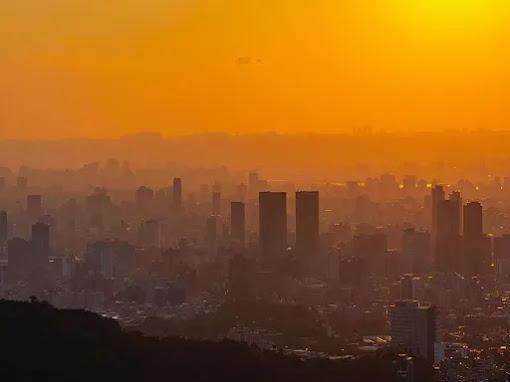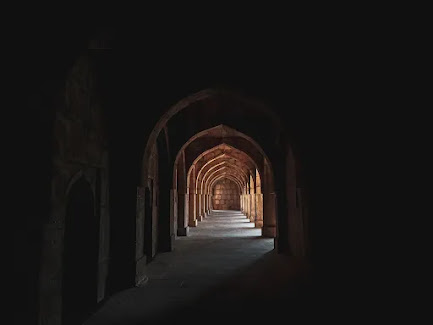
|
| Samaipata, together with Machu Picchu, is one of the most mysterious sites of the Inca civilization |
The enigmatic complex serves as a reminder of South America's rich historical legacy, which is frequently overlooked. It may even be older than the pyramids of Egypt or the Stonehenge stone circles. El Fuerte's provide a singular window into antiquity, inspiring us to investigate the traces left by extinct societies. Come along with us as we investigate El Fuerte de Samaipata's mysteries.
The rock with hundreds of carvings
Samaipata is a small Bolivian town that has gained fame for its stunning mountain scenery, exceptional wine, and mysterious prehistoric site. The town offers many attractions, the most well-known of which is El Fuerte de Samaipata, a UNESCO World Heritage Site. It is located in the Santa Cruz Department of Bolivia, tucked away in the foothills of the Andes mountains. The lush valleys, moderate climate, and multiple springs providing an abundance of water have led to the flourishing of many prehistoric civilizations there. Samaipata, a mysterious complex, was built by one of them.
El Fuerte is located at a height of approximately 1950 meters above sea level on a hill some distance from the city. Despite its name, 'El Fuerte' (The Fort), it is a big carved rock rather than a regular fort. The enormous rock is thought to have been carved in the tenth century by an unidentified culture. The rock is carved with geometric patterns, zoomorphic characters, channel-like features, niches, stone tables, teracces, etc. It is roughly 220 meters (720 feet) long and 60 meters (200 feet) wide. .

|
| Samaipata contains hundreds of mysterious carvings of unknown origin and purpose |
The Samaipata's original builders are unknown, but it's clear that they weren't Incas. Samaipata is believed to have been founded by an enigmatic tribe or civilization that originated from the Amazon rainforest. The original builders have not been identified by science. It is believed by some scientists that the builders were the mysterious Chanes or Moyocoyan inhabitants of the Amazon Lowlands.
Following the disappearance of the enigmatic founders, El Fuerte became the administrative, ecclesiastical, and military hub of the Inca empire upon the arrival of the Incas. Despite this, the site still has architectural remnants left by its original builders, which we will talk about later.
How Saimapata has evolved over time
Because El Fuerte de Samaipata has been inhabited by numerous cultures for millennia and each has left its mark, it is difficult to pinpoint the exact period of its creation. While Samaipata's growth may be broadly categorized into three key phases, it is essentially a puzzle with numerous unknown pieces. The first buildings and sculptures in El Fuerte de Samaipata were made by an unidentified group of people, who were quickly followed by the Chanés, a pre-Inca agrarian culture. While precise dating is challenging, it's plausible that Chanes people lived in the region as early as AD 300.

|
| Later, the Incas came and built numerous monumental buildings on the site of Samaipata |
The Chanes left behind several enigmatic constructions and carvings before the Incas took over. During the late 15th and early 16th centuries (about the 1470s to the early 1500s), the Incas significantly altered the site. El Fuerte's strategic hilltop location was useful for defense. Located on the eastern edge of the Inca Empire, Samaipata acted as a defensive line against the fierce Guarani tribes that came from the Amazon Basin. El Fuerte's strategic hilltop location was useful for defense. After the Spanish arrived in the 16th century, the region surrounding El Fuerte experienced more changes. Following the Spanish arrival in the 16th century, additional changes were made to the area surrounding El Fuerte. Even though the Spanish did not make much changes to the rock itself, their arrival in the area marked the beginning of a new era.
The many mysteries that surround Saimapata
El Fuerte de Samaipata is riddled with secrets. Its numerous carvings are among the best-known. The towering sandstone rock dominates El Fuerte, which is adorned with carvings of zoomorphic and geometric designs. There is ongoing discussion on their precise significance. According to certain beliefs, they served as a kind of sacred geography or were utilized for astronomical observations. These include carvings that strongly imply they were used to commemorate important astronomical occasions, such the equinoxes and solstices.
The carved channels and basins that are visible on the surface of the rock are another mystery. They are made with a precise 180-degree descent, and what is even more interesting is that they are constructed in such a way that they point towards a specific location in the night sky, namely the constellation of Lion.

|
| Geometrically perfect water channels are oriented towards the constellation of Leo. Why? |
The influence of Incas in Saimapata
After their arrival, the Incas expanded El Fuerte by creating trapezoidal entrances, recesses in the walls, and traditional Inca terraces and storerooms known as kollqas. Samaipata played a major role in the defense of the Inca empire due to its advantageous location on the edge of the Amazon rainforest. It was a location where interactions between lowland Amazonian communities and Andean highland cultures, such as the Incas, took place.

|
| The Incas were masters at building structures in the hard-to-reach mountain environment of the Andes |
The strategic placement of El Fuerte de Samaipata near the periphery of the Inca Empire helped to keep tribes from the Amazon Basin from invading, while also allowing the Incas easy access to the Amazon Lowlands. Saimapata served as a commerce hub as well. Feathers, coca leaves, and tropical fruits were just a few of the products and resources the Incas were able to acquire from the Amazon. El Fuerte's architecture, notably its terraces, demonstrates an intimate knowledge of the environment while adapting to the local hilly geology.
Who were the initial builders?
The origins of El Fuerte de Samaipata, particularly the original builders and the site's development over time, are not fully documented. Much of what we know is thanks to the Bolivian archaeologist Oswaldo Rivera Sundt, who was instrumental in excavations and studies at Samaipata, contributing extensively to the understanding of the site's history. His work in the late 20th century helped to map and document the extensive carvings and architectural features of the site.
Unfortunately, many questions remain unsolved regarding the pre-Columbian Americas due to the lack of comprehensive historical documents. There are gaps in our understanding because the identity of Saimapata's founders was lost long before the arrival of the Spanish.
What is the purpose of so many carvings?
Geometric shapes and animal figures are among the carvings that can be seen on the central rock at El Fuerte de Samaipata. The significance of these patterns is unclear and they cover a large area. It's possible that the animal figures were meant to represent deities or spiritual guardians.

|
What are they trying to tell us? |
It's possible that the carvings are a symbolic map of the cosmos, linking the earthly realm with the universe. Numerous channels are found carved into the rock. Their purpose is unknown, but they could be used for purification or fertility ceremonies. The significance of water in rituals and the meaning of these channels remain a mystery. The fact that certain channels have a nearly perfect geometric shape and point towards the constellations of Leo in the sky is truly intriguing. Despite being exposed to the elements and passing time, many of the carvings remain in relatively good condition.
The central rock was a focal point for religious rituals.
What tools were utilized?
The Incas used materials found in their surroundings, such as stone, wood, and bronze, to make their stoneworking tools because they lacked access to iron or steel. The Incas shaped other stones with rounded stones that they used as hammers. The size of these could range from tiny portable stones for delicate tasks to bigger ones for breaking and sculpting enormous stone blocks.Another tool used by them was the bronze Chiself, which was used for finer stone carving and sculpting. The relatively soft andesite and limestone that the Incas frequently worked with were easily worked by bronze, which is softer than iron or steel but harder than copper.
Is Saimapata the lost city of Z searched for by Percy Fawcett?
Could El Fuerte de Samaipata be the lost city Percy Fawcett sought in the uncharted depths of the Amazon? Fawcett, who disappeared during his legendary expeditions, was obsessed with the idea of locating 'Z,' a mythical city of advanced civilization. El Fuerte, with its strategic location on the edge of the Amazon, where Fawcet originally searched for the city, matches the descriptions of City Z. Though evidence remains speculative, the mystery of El Fuerte de Samaipata as a potential link to Percy Fawcett can be simply thrown away from the window. To explore the connection between City of Z and El Fuerte de Samaipata more concretely, we need to explore the specific attributes of this mythical city and compare them to the known features of El Fuerte.

|
Was Percy Fawcett, in reality, searching for Samaipata? |
A Portuguese manuscript that recounted a lost city in South America was the source of inspiration for Percy Fawcett's lost city of Z. Fawcett imagined Z as having developed architecture. The lost city was described as having impressive architectural achievements, including buildings, plazas, and a complex layout. Similarly, El Fuerte de Samaipata showcases remarkable architectural ingenuity, especially its massive, sculpted rock believed to have served both ceremonial and functional purposes. The site's layout, with its agricultural terraces, water channels, and strategic positioning, mirrors the advanced planning and construction skills attributed to the civilization described in the Portuguese manuscript. An advanced understanding of astronomy was hinted at in the manuscript, which can be compared to El Fuerte. Some scholars have proposed that El Fuerte's carvings and alignments may have been used for astronomical purposes, which would have marked solstices, equinoxes, and other celestial events, indicating a significant connection to the cosmos.

|
In Samaipata, allusions to the night sky can be found everywhere |
According to the manuscript, the city was depicted as isolated and concealed from the outside world. El Fuerte de Samaipata, perched on a hilltop at the edge of the Amazon Basin and the Andes, is also a remote location. The isolated location would have been ideal for a culture to flourish away from external threats, just like the isolation of the city of Z described in the manuscript. Although Fawcett searched for Z inside the Amazon Basin, El Fuerte, which is located at the edge of the Amazon and acts as a strategic point between the Andes and the lowlands, may fit in a picture. Just as the origins of Z are shrouded in mystery, so too are the origins of El Fuerte de Samaipata. The site's date of construction and the identity of its original builders remain unknown, fueling speculation about its origins and purpose.
Another theory: aliens and ley lines
Anothet theory proposes that these ancient sites were either built by extraterrestrial visitors or with their assistance. In the case of El Fuerte de Samaipana, the intricate and precise nature of the carvings could be cited as evidence of knowledge or technology that was beyond the capability of ancient civilizations.Another theory posits that sites like El Fuerte were created by lost civilizations with advanced technologies that have since been forgotten or were wiped out by cataclysmic events.
.webp)
|
What was the purpose of these mysterious features? |
Conclusion
When we now know beter the history of El Fuerte de Samaipata, we are reminded of the vast mysteries that our world still holds. The parallels drawn between this ancient site and the legendary City of Z, as described in the ancient Portuguese manuscript that fueled Percy Fawcett's obsession, open a fascinating chapter in our imagination. But as we stand on the precipice of discovery, gazing out over the sprawling ruins and intricate carvings of El Fuerte, we are left with more questions than answers. Could this site truly hold a connection to the mythical city that captivated Fawcett's imagination and ultimately claimed his life? Is it possible that the builders of El Fuerte were part of a broader network of advanced civilizations in pre-Columbian South America, their achievements and identities obscured by the passage of time? Or does El Fuerte represent a unique cultural phenomenon, a testament to the ingenuity and spiritual depth of native american tribes and cultures of pre columbian america. These questions invite us to consider the broader implications of our fascination with lost cities and hidden civilizations. How might these ancient sites challenge our understanding of human history, urging us to reconsider the narratives we have constructed about the capabilities and reach of ancient cultures? As we ponder these questions, the mystery of El Fuerte de Samaipata remains, its stones silent witnesses to centuries of human development. The quest for understanding continues, a journey not just through the dense jungles of the Amazon but through the realms of human curiosity and imagination. Perhaps the true significance of El Fuerte, and indeed of the elusive City of Z, lies not in the answers they might provide, but in the questions they compel us to ask — questions that draw us ever deeper into the mysteries of our shared human heritage.

















.webp)









.webp)


